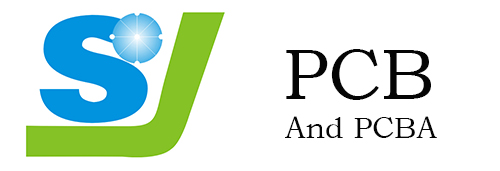For example, a 10Gb/s high-speed digital signal is a square wave, which can be regarded as a superposition of sine wave signals of different frequencies. Therefore, 10Gb/s includes many different frequency signals: 5GHz base frequency signal, third order 15GHz, fifth order 25GHz, seventh order 35GHz signal, etc. Maintaining the integrity of the digital signal and the steepness of the upper and lower edges is the same as the low-loss and low-distortion transmission of radio frequency microwaves (the high-frequency harmonic part of the digital signal reaches the microwave band). Therefore, in many respects, the material selection of high-speed digital circuit PCB is similar to that of radio frequency microwave circuit.
High-frequency high-speed plate selection method
In actual engineering operations, the selection of high-frequency boards seems simple, but there are still many factors to consider. Through the introduction of this article, as a PCB design engineer or high-speed project leader, I have a certain understanding of the characteristics and selection of boards. Learn about the electrical performance, thermal performance and reliability of boards. Reasonably use lamination, design products with high reliability and self-processability, and optimize and consider various factors.
The following will introduce the main considerations for choosing a suitable plate:
1. Manufacturability:
For example, how about multiple pressing performance, temperature performance, CAF/heat resistance, mechanical toughness (adhesion) (good reliability) and fire rating;
2. Various properties matching the product (electrical, performance stability, etc.):
Low loss, stable Dk/Df parameters, low dispersion, small coefficient of variation with frequency and environment, small tolerance of material thickness and glue content (impedance control sub), if the trace is long, consider low roughness copper foil. Another point is that the design of high-speed circuits requires simulation in the early stage, and the simulation results are the reference standard for design. "Xingsen Technology-Agilent (High Speed/RF) joint laboratory has solved the performance problem of inconsistency between simulation results and tests, has done a lot of simulation and actual test closed-loop verification, and can achieve consistency between simulation and actual measurement through a unique method.
Low loss, stable Dk/DF parameters, low dispersion, small coefficient of variation with frequency and environment, small tolerances for material thickness and glue content (good impedance control). For longer traces, consider low-roughness copper foil. On the other hand, simulation is required in the early stage of high-speed circuit design, and the simulation results are the reference standard for design. "Xingsen Technology-Agilent (High Speed/RF) Joint Laboratory" solves the performance problem that the simulation results are inconsistent with the test. It has carried out a large number of closed-loop verifications on simulation and actual testing, and has achieved the consistency of simulation and actual measurement through a unique method.
3. Timely availability of materials:
The procurement cycle of many high-frequency boards is very long, even 2-3 months; except for the conventional high-frequency board RO4350 that is in stock, many high-frequency boards need to be provided by customers. Therefore, high-frequency plates need to communicate with the manufacturer in advance and prepare materials as soon as possible;
4. Cost factor Cost:
Look at the price sensitivity of the product, whether it is a consumer product, or a communication, medical, industrial, or military application;
5. Applicability of laws and regulations, etc.:
It must be integrated with the environmental protection regulations of different countries and meet the requirements of RoHS and halogen-free.
Among the above factors, the operating speed of high-speed digital circuits is the main factor considered in PCB selection. The higher the circuit speed, the smaller the PCBDF value should be selected. Medium and low-loss circuit boards are suitable for 10Gb/s digital circuits; low-loss boards are suitable for 25gb/s digital circuits; ultra-low-loss boards will adapt to faster high-speed digital circuits, and their speeds can reach 50GB/5 or higher.
From the perspective of material rice bucket Df:
The Df price is between 0.01 ~0.005, and the circuit board is suitable for the upper limit of 10Gb/S digital circuit;
The price of Df is between 0.005~0.003, and the circuit board is suitable for the upper limit of 25Gb/S digital circuit;
The circuit board with Df not exceeding 0.0015 is suitable for 50Gb/S or even higher-speed digital circuits.
Commonly used high-speed plates are:
1), Rogers: RO4003, RO3003, RO4350, RO5880, etc.
2), Taiyao TUC: Tuc862, 872SLK, 883, 933, etc.
3), Panasonic: Megtron4, Megtron6, etc.
4) , lsola: FR408HR, IS620, IS680, etc.
5) .Nelco: N4000-13, N4000-13EPSI, etc.
6), Dongguan Shengyi, Taizhou Wangling, Taixing Microwave, etc.
Of course, there are many other high-frequency boards, such as Arlon (acquired by Rogers last year) and Taconic, all of which are old brand RF microwave board factories with guaranteed performance.

